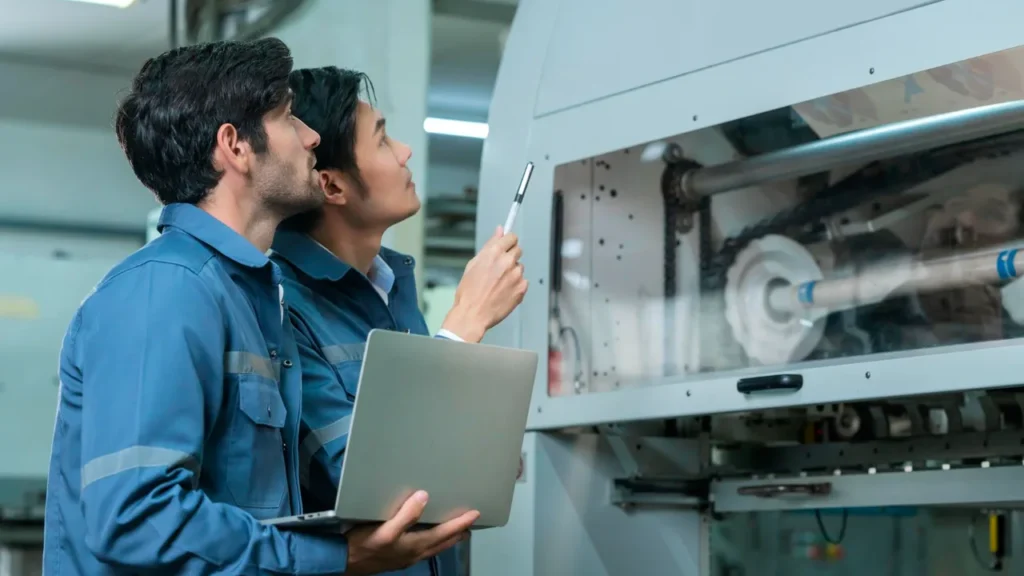Lean manufacturing has become one of the most influential approaches in the modern industrial world. Originally derived from the Toyota Production System (TPS), this philosophy focuses on waste reduction and process optimization to achieve higher productivity and efficiency. Unlike traditional production systems that emphasize volume, lean centers on value—what truly matters to the customer. By removing non-value-added activities, companies can operate more efficiently and boost profitability.
The idea behind lean is simple: create more value with fewer resources. This means reducing excess inventory, unnecessary motion, waiting times, or overproduction. In today’s manufacturing landscape, where competition and costs continue to rise, lean manufacturing offers a practical and proven framework for sustainable growth.
Core Principles of Lean Manufacturing
Lean manufacturing is guided by five fundamental principles that help streamline operations while maintaining high-quality output. These principles are designed to build a culture of continuous improvement within every layer of the organization.
- 1. Define Value — Understand what customers truly need and eliminate anything that doesn’t add value.
- 2. Map the Value Stream — Analyze all steps of the process and identify wasteful actions or delays.
- 3. Create Flow — Ensure that products move smoothly through the production system without interruptions.
- 4. Establish Pull — Implement a pull-based system where production is driven by actual customer demand.
- 5. Pursue Perfection — Continuously seek improvement through feedback and innovation.
When these principles are applied correctly, manufacturers can see remarkable gains in efficiency and flexibility. Lean manufacturing is not just a set of tools—it’s a mindset that transforms how people work and think about productivity.
Waste Reduction: The Foundation of Lean
At the heart of lean manufacturing lies waste reduction. Every organization has some form of waste—whether it’s time, materials, or effort. Lean identifies seven types of waste that can hinder performance:
- Overproduction — Producing more than what’s needed.
- Waiting — Idle time between process steps.
- Transport — Unnecessary movement of materials.
- Over-processing — Doing more work than required to meet quality standards.
- Inventory — Excess materials or products that tie up cash flow.
- Motion — Unnecessary movement of workers or equipment.
- Defects — Rework caused by errors or poor quality.
Reducing these wastes directly leads to lower costs, faster production times, and better quality. For example, in an automotive assembly line, applying lean principles can reduce cycle time by up to 30% while improving consistency. It’s not only about cutting waste but also about creating a culture that continuously looks for improvement opportunities.
Process Optimization Techniques
To implement lean manufacturing effectively, businesses use a set of structured tools designed for process optimization. Each method targets different areas of production but collectively contributes to achieving smoother, more efficient workflows.
- Value Stream Mapping (VSM): A visual tool to identify all steps in a process and highlight waste or delays.
- Kaizen: A philosophy of small, continuous improvements led by employees at all levels.
- 5S Methodology: Sort, Set in order, Shine, Standardize, and Sustain—a system for organizing the workspace to enhance productivity.
- Kanban: A scheduling system that helps control inventory and maintain flow based on demand.
- Total Productive Maintenance (TPM): Involves everyone in maintaining equipment to minimize downtime and improve reliability.
These techniques ensure that operations remain lean and flexible. For instance, a factory implementing process optimization through 5S and Kaizen might reduce production floor clutter by 50%, improving worker safety and speed. As a result, profits increase without additional investment in equipment or manpower.
The Role of Technology in Lean Manufacturing
With the rise of Industry 4.0, digital technology has become an integral part of modern lean manufacturing. Data-driven solutions enhance process optimization and support better decision-making across production stages.
Technologies such as the Internet of Things (IoT) allow for real-time monitoring of machinery, while Artificial Intelligence (AI) can predict equipment failures before they occur. Cloud-based systems make data sharing easier, improving supply chain integration and transparency. Together, these tools reduce downtime, minimize waste, and streamline communication between departments.
However, digital transformation comes with its own challenges. Many companies struggle to align new technologies with lean principles. The key is balance—technology should serve as an enabler, not a replacement, for the lean mindset of continuous improvement.
Benefits of Lean Manufacturing for Businesses
Implementing lean manufacturing brings both immediate and long-term advantages. From cost savings to improved customer satisfaction, the results are measurable and sustainable. Below is a breakdown of key benefits:
| Aspect | Before Lean | After Lean |
|---|---|---|
| Production Time | 8 hours | 5 hours |
| Defect Rate | 6% | 2% |
| Inventory Turnover | Low | High |
| Employee Efficiency | Moderate | Improved |
These tangible results show how lean can boost profitability through waste reduction and process optimization. Businesses that embrace lean principles are more agile and better equipped to face market changes. From automotive to electronics manufacturing, the lean approach continues to reshape global production standards.
Part 2 continues with challenges, sustainability, and conclusion…
Common Challenges and How to Overcome Them
While the benefits of lean manufacturing are clear, many organizations face challenges during implementation. These obstacles often arise from cultural, technical, or structural issues that hinder full adoption of lean principles.
1. Resistance to Change
One of the most common barriers is employee resistance. Workers may fear that lean initiatives will lead to job cuts or stricter control. Overcoming this requires transparent communication and training. Management should emphasize that lean manufacturing is not about cutting people—it’s about empowering them to eliminate waste and improve efficiency.
2. Lack of Leadership Commitment
Without consistent leadership support, lean programs rarely succeed. Leaders must actively participate, provide resources, and celebrate small wins to maintain momentum. A committed leadership team ensures that waste reduction and process optimization efforts become part of the company’s culture, not temporary campaigns.
3. Siloed Departments
Lean depends on cross-functional collaboration. When departments work in isolation, information flow becomes slow and errors increase. The solution lies in breaking silos and encouraging teams to share data openly. Collaborative tools and regular review meetings help align everyone toward the same lean objectives.
4. Overcomplicating Lean Implementation
Some companies attempt to introduce too many lean tools at once, leading to confusion and burnout. The key is to start small—apply one or two techniques such as 5S or Kaizen—and expand gradually. Simplicity is the foundation of lean; complex systems often contradict its philosophy of eliminating waste.
When these challenges are managed well, companies can create a sustainable environment for continuous improvement. Over time, the workplace transforms into a more organized, efficient, and profitable system driven by lean principles.
Lean Manufacturing and Sustainability
Beyond profit and efficiency, lean manufacturing aligns closely with sustainability. By focusing on waste reduction and smarter resource utilization, lean directly supports environmental goals and long-term resilience. Every form of waste eliminated—energy, water, materials, or time—contributes to a cleaner and greener production process.
For example, when manufacturers use lean techniques to minimize overproduction, they also reduce energy consumption and raw material usage. Similarly, process optimization ensures machines operate efficiently, cutting down on unnecessary energy waste. Many global corporations now integrate lean and green strategies to meet both financial and environmental objectives.
A well-known case is Toyota’s Production System, which demonstrates how lean principles not only improve quality and efficiency but also reduce environmental impact. This approach has inspired industries worldwide to adopt similar sustainable models that combine lean thinking with eco-conscious manufacturing.
How Lean Supports Green Manufacturing
- Reduced Resource Use: Less material waste and better energy efficiency.
- Lower Emissions: Optimized logistics minimize transportation waste and carbon output.
- Longer Product Lifecycles: Better quality reduces rework and product returns.
- Employee Engagement: Lean encourages everyone to take ownership of sustainability goals.
In the era of ESG (Environmental, Social, and Governance) standards, combining lean and sustainability has become a competitive advantage. Companies that implement lean gain not just higher profits but also stronger brand reputation and stakeholder trust.
Case Studies: Lean in Action
To understand how lean manufacturing drives success, consider two real-world scenarios:
Case 1: Automotive Component Factory
A mid-sized auto parts manufacturer implemented process optimization through Kaizen workshops. Within six months, production lead time decreased by 25%, and material waste dropped by 18%. Employee satisfaction improved because workers felt empowered to suggest improvements. The result: a direct increase in annual profit margins.
Case 2: Electronics Assembly Line
Another example comes from an electronics firm that adopted waste reduction initiatives by applying 5S and Kanban systems. By reorganizing storage and implementing pull-based production, they reduced unnecessary inventory by 40% and achieved better order fulfillment times. The lean transition also reduced defect rates, enhancing customer confidence and loyalty.
These examples demonstrate that lean manufacturing is not exclusive to large corporations. Even small and medium enterprises can benefit when they commit to continuous improvement and empower their workforce.
Measuring Success: Lean Performance Indicators
To ensure the success of lean manufacturing programs, companies should regularly measure key performance indicators (KPIs). These metrics help track progress, identify bottlenecks, and maintain long-term improvement.
| Performance Metric | Description | Goal under Lean System |
|---|---|---|
| Cycle Time | Time required to complete one production unit. | Reduce by 20–40% |
| First Pass Yield | Percentage of products meeting quality standards on first try. | Above 95% |
| Inventory Turnover | Number of times inventory is sold and replaced in a period. | Increase turnover rate |
| Overall Equipment Effectiveness (OEE) | Measure of equipment utilization and performance. | Above 85% |
Tracking these indicators provides a clear picture of how effectively lean manufacturing principles are being applied. Continuous review ensures that organizations stay aligned with their improvement goals.
Conclusion
Lean manufacturing is more than a production strategy—it’s a philosophy of efficiency, respect, and progress. Through waste reduction and process optimization, businesses can achieve not only higher profits but also greater adaptability in today’s competitive market. Lean empowers organizations to do more with less, while maintaining high quality and customer satisfaction.
As industries evolve, lean principles will continue to shape the future of manufacturing. Companies that embrace lean thinking will stand out for their innovation, agility, and sustainability. By embedding lean into everyday operations, any manufacturer—big or small—can streamline processes for profit and long-term success.



